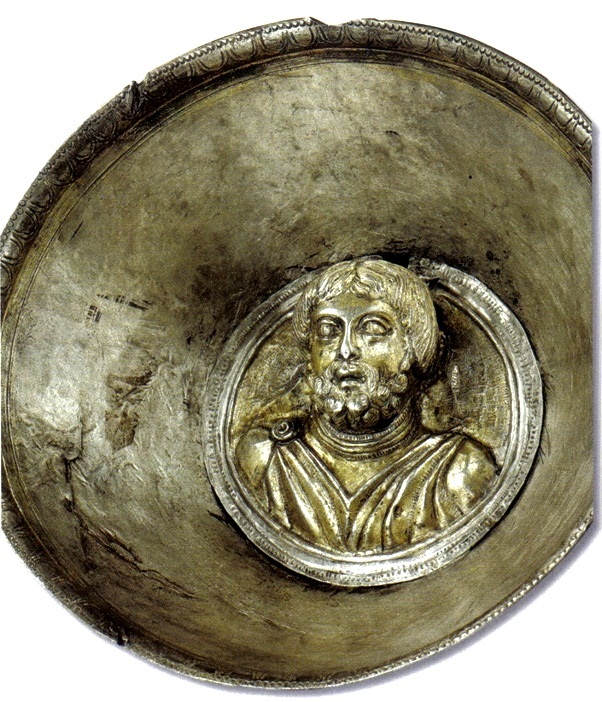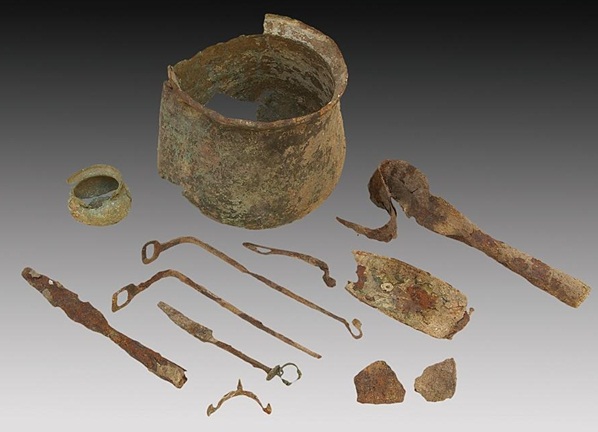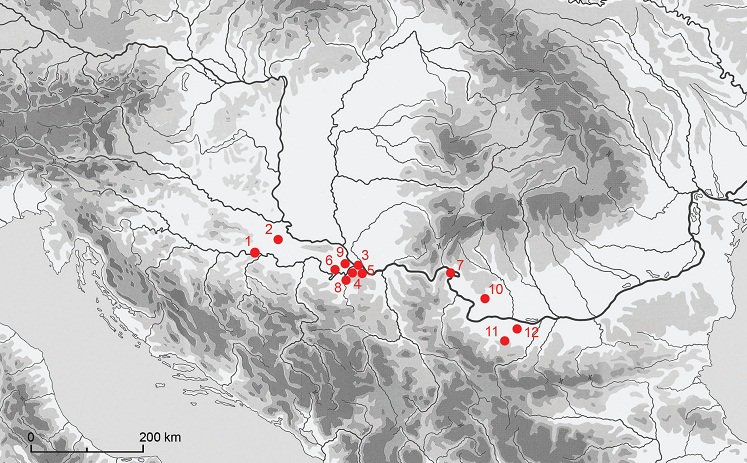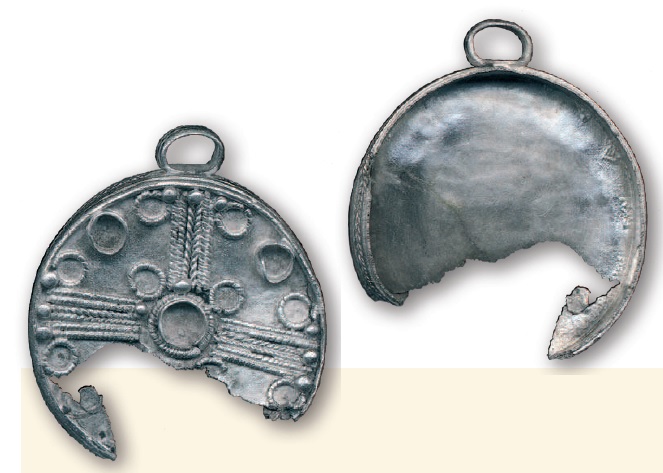UD: June 2019
The use of rattles in folk dances and rituals is recorded in cultures throughout the world, either hand-held or attached to ceremonial costumes to dictate the rhythm of ritual dances, and to summon or repel supernatural beings or demons.

Globular or pear-shaped rattles from Dowris (Co. Offaly), Ireland (c. 850 BC)
These three rattles, or ‘crotals’, were part of a large find of bronze metalwork made in Dowris bog in the mid-nineteenth century, which included weapons, tools and elaborate sheet metal vessels.
(See Eogan E. (1983), The hoards of the Irish Later Bronze Age (Dublin)

Bird-shaped ceramic rattle from Ichstedt (Ldkr. Kyffhäuserkreis), Germany (Late Bronze Age)
In Celtic Europe rattles appear in the Bronze Age, and by the La Têne period are recorded at sites throughout the continent. Logically, regional variations are to be observed in decoration and form, and rattles of both ceramic and metal have been discovered.

Decorated ceramic rattle from a Celtic (Vaccean) burial at the necropolis of Las Ruedas (Pintia), north-central Spain (2 c. BC)
Celtic rattles discovered in the Vaccean environment from the northern Iberian plateau have been dated between the end of the 3rd century BC and the beginning of the 1st century AD.
(see: Sanz Minguez C., Romero Carnicero F., De Pablo Martinez, R., Górriz Gañán C., Vaccean
Rattles. Toys or Magic Protectors?, in Jiménez Pasalodos Raquel, Till R., Howell M. (eds.),
Music and Ritual: Bridging Material and Living Cultures, Berlin, p. 257–283)
With eastern expansion, from the 4th century BC onwards, rattles also begin to appear at Celtic sites across eastern Europe. Examples include those from Bucsu in Hungary, Hanska-Toloacă in the Republic of Moldova, Buneşti-Avereşti in eastern Romania, Novo Mesto in Slovenia, Zvonimirovo in Croatia, Čurug in northern Serbia and Kabyle in Bulgaria (Rustoiu A., Berecki S. (2015). A further example of such has recently been published from a Celtic burial at Fântânele – Dâmbu Popii in Romania, dating to the 3rd c. BC.

The egg-shaped ceramic rattle from a Celtic burial at Fântânele
(After: Rustoiu A., Berecki S. (2015) The Magic of Sounds. A Ceramic Rattle from the La Tène Grave No. 1 at Fântânele – Dambu Popii and Its Functional and Symbolic Significance. In: Representations, Signs and Symbols. Proceedings of the Symposium on Religion and magic. Cluj-Napoca 2015. p. 259-274)

Ceramic rattle from the Celtic (Scordisci) settlement at Čurug (Vojvodina), Serbia (2-1 c. BC)
Rattles have been discovered in the burials of both Celtic adults and also in funerary contexts belonging to children or youngsters, logically indicating that they were regarded as having a protective and preventive function, regardless of the gender or age of the entombed.
An example of the manner in which such metal rattles were used in Celtic music and dance is provided by the modern custom of “Căluş” or “Căluşari” from Romania, which is a male dance related to pre-Christian solar cults. In this case, the rattles are strapped to the legs of the dancers and dictate the dance rhythm (op cit). Metal rattles quite similar to those used in today’s folk costumes have been discovered in Balkan Celtic funerary inventories, for example in Celtic warrior burials # 4 and 12 from Zvonimirovo in Croatia in which the rattles were, as in modern Romanian and Bulgarian folk dances, attached to the garment or the belt.

Metal rattle strapped on the leg of a modern “Căluşar” dancer from Romania, and a similar rattle discovered in a warrior burial (# 4) from the Celtic cemetery at Zvonimirovo, Croatia (2 c. BC)
( On the Celtic burials from Zvonimirovo see: https://balkancelts.wordpress.com/2014/01/18/the-celtic-burials-at-zvonimirovo-croatia/ )
Mac Congail














































